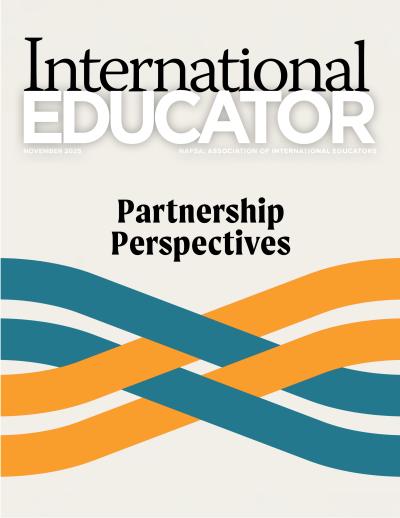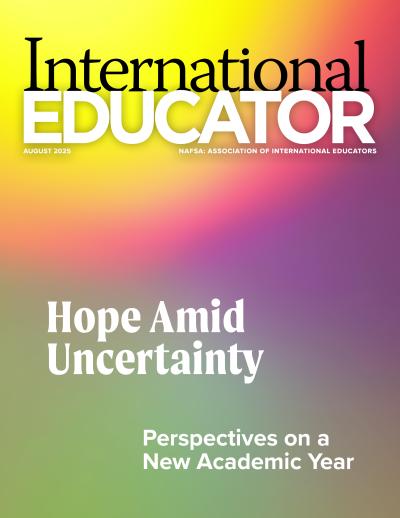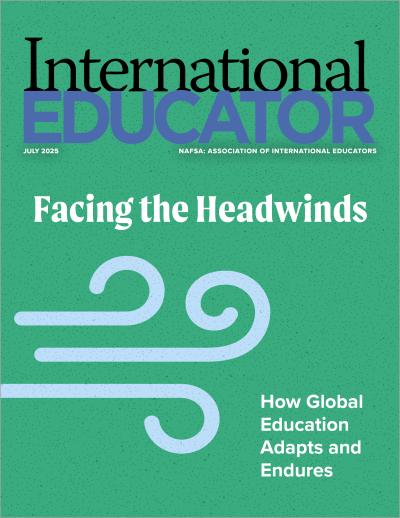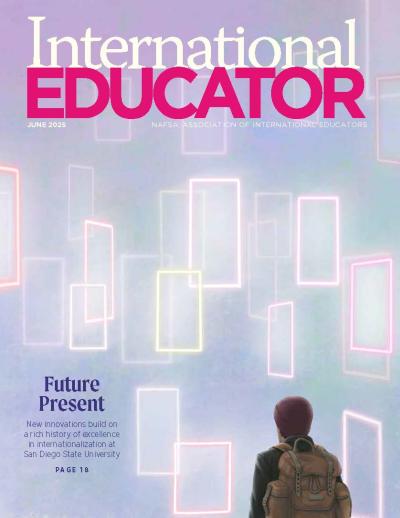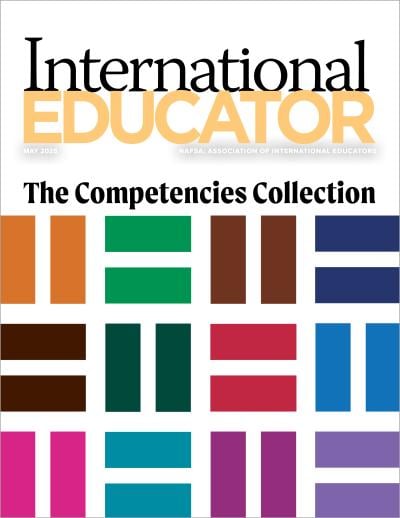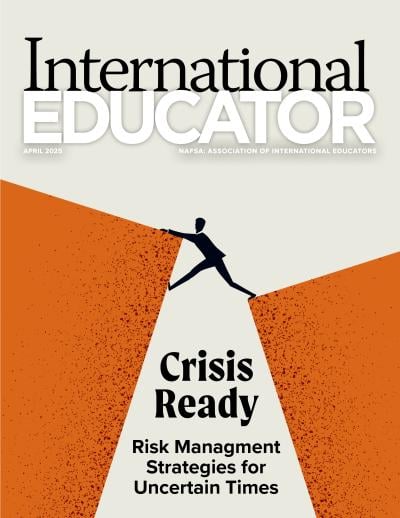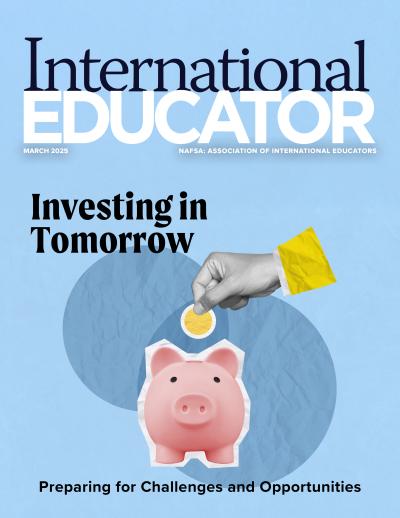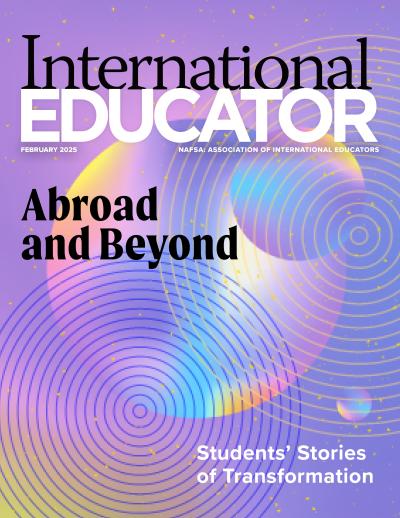From Purpose to Practice

International education professionals possess rare and precious attributes: moral alignment with their work and a recognition that global understanding contributes to a more just and equitable world. They are fueled by the knowledge that their work creates a ripple effect that extends far beyond individual students.
Too often, however, a gap exists between this higher purpose and the daily reality of operational practices. To close this gap, international enrollment leaders can apply a purpose-based framework to assess daily operations and identify areas for positive change and meaningful impact.
What Is Purpose in IEM?
Purpose in enrollment management, often understood as a mission, can be viewed through multiple lenses that can overlap or diverge. International enrollment management (IEM) professionals can examine mission alignment through different areas of focus:
Personal and Professional Values
IEM leaders must center the enduring values and mission of international education while navigating the ever-changing landscape of higher education. They must stay abreast of emerging trends, best practices, opportunities, and challenges—and consider how these fit into the bigger picture. Professional alignment means maintaining a connection to the field's mission while adapting to current conditions and challenges.
Ethical Standards and Considerations
The responsibility for ethical practice doesn't lie solely with higher education institutions; it is shared by all in the international education ecosphere. The field faces several issues that raise ethical considerations, including those related to education agents, reliance on international students to offset declining domestic enrollments, the rollback of diversity initiatives, adoption of artificial intelligence (AI), and global political shifts. These concerns demand adaptive strategies from institutions, service providers, and recruitment partners to reaffirm core values.
Institutional and Team Mission
Even when not explicitly mentioned, international education is often implicitly connected to an institution's mission through references to diversity, global impact, and research. International enrollment also enhances cross-cultural learning, global reputation, successful student outcomes, research collaborations, faculty research, and financial sustainability.
Dan Robb, associate vice chancellor for enrollment management at the University of South Carolina-Aiken, says that an alignment-based approach is no longer a luxury but an imperative. “Previously, it may have been possible for the one institutional international enrollment person to be the champion and craft strategies, travel plans, and so on,” he says. “Now, given the urgency of prioritization and resource allocation decisions, an inclusive and comprehensive approach to a campuswide direction is critically important. In resource-constrained environments, mission-driven decisions…have a higher likelihood of securing funding and support on the campus.” Aligning international enrollment with institutional goals strengthens both impact and long-term sustainability.
Alignment in Practice
One seasoned campus-based enrollment leader defines mission alignment as the guiding principle for every aspect of his daily work. “The mission should be present in conversations between colleagues, students, and faculty on solving process challenges to create new solutions,” he says. “It should be present…when you're [communicating] to students. It should be present when reviewing data to inform strategy and keeping [focused] on [the right] outcomes.”
Ideally, daily practices align with the purpose and mission. In reality, most professionals must balance competing priorities, adapting over time to meet evolving needs and conditions. However, even small steps toward greater integration of purpose can make a meaningful difference.
Examples of purpose-aligned operations include:
- partnerships and alliances that prioritize global engagement and student success, not only financial outcomes;
- financial aid and scholarship policies that support access, diversity, and retention;
- admissions criteria and application evaluation processes that reflect mission goals;
- policies and protocols that respect the privacy and personhood of students, team members, and others affected by IEM practices;
- transparent communication with students, stakeholders, partners, and the wider community;
- contributions to industry-wide advocacy efforts that advance the field; and
- participation in professional associations and gatherings to stay informed about and responsive to changing conditions.
Most IEM professionals would agree about the importance of a purpose-aligned approach, but where's the best place to get started or improve on existing efforts?
Closing the Gap: Conducting a Values Audit of Enrollment Operations
A values-based review of enrollment operations helps realign process with mission-driven goals while serving institutional priorities. Evaluate practices against a few questions that speak to the principles and considerations the team wants to center. The evaluation may include a list of questions or a rubric to explore the three frameworks and help professionals reflect intentionally on operations:
- Ethical: Does this practice reflect the ethical and human-centered values at the heart of international education?
- Professional: Does this practice align with best practices and evolving standards in both international education and enrollment management?
- Institutional: Does this practice support and advance the broader goals of the institution and align with institutional mission and identity?
Consider the following areas when assessing mission alignment.
A values-based review of enrollment operations helps realign process with mission-driven goals while serving institutional priorities.
Partnerships and Alliances
Consider agencies, institutional partnerships, service providers, community-based organizations, and other affiliations. How do partnerships reflect the institution's mission and identity? Do they serve a broader purpose? Institutions should examine whether their alliances are mission driven or merely transactional, considering, for example, how they foster global engagement and student success.
Financial
Review scholarship, work-study, and financial aid awarding policies and their outcomes, including award equity, debt creation, and work-study burden disparity. Do these policies support mission-related goals? Is information about total cost of attendance, loan implications, and long-term affordability communicated clearly? Is funding (e.g., emergency funds or tuition installment plans) in place to support retention in case of unexpected financial hardships?
Assessment
Look at admissions policies, application reading models, and shortlisting practices. Do admissions criteria (e.g., testing, English proficiency evaluation, credentials) reflect goals related to access, diversity, and ability to benefit? Do policies address varied educational settings or rely on the existing domestic admissions process that may favor students from U.S. schools? Is there flexibility in demonstrating academic potential?
Data and Information Privacy
Are students' personal and academic data protected with transparency and care? Do policies reflect mission-related goals for respecting students' digital identity? If applicants' personal social media accounts are evaluated or used in recruitment interactions with staff, is this done fairly, safeguarding against bias? Are personal data stored securely and purged routinely?
Policy Transparency
Are policies explained with mission justification, demonstrating how implementation reflects the goals of the department and the institution? For example, providing insights about selection criteria and waitlist management can help students understand their chances of enrollment. Likewise, clear guidelines on deadline extensions, deferrals, financial aid appeals, and deposit refunds build trust with students, ensuring they understand their options and the rationale behind institutional decisions.
Undertaking an alignment assessment and operationalizing the findings can help ensure that purpose becomes more than just an abstract ideal—it becomes a tangible force that drives positive change and facilitates meaningful impact.
Tying It All Together
The audit exercise should culminate in the creation of a mission statement for the international enrollment team and the identification of areas for focused improvement. A strong mission statement synthesizes big-picture alignment, industry trends, and institutional priorities and explicitly ties the daily work of the team to the institutional mission and the advancement of international education.
Undertaking an alignment assessment and operationalizing the findings can help ensure that purpose becomes more than just an abstract ideal—it becomes a tangible force that drives positive change and facilitates meaningful impact. •
NAFSA Resources
- Data Driven Decision Making e-Learning Series
- Engaging International Alumni as Strategic Partners
- Managing a Successful International Admissions Office
- NAFSA's Guide to International Student Recruitment, Fourth Edition
About International Educator
International Educator is NAFSA’s flagship publication and has been published continually since 1990. As a record of the association and the field of international education, IE includes articles on a variety of topics, trends, and issues facing NAFSA members and their work.
From in-depth features to interviews with thought leaders and columns tailored to NAFSA’s knowledge communities, IE provides must-read context and analysis to those working around the globe to advance international education and exchange.
About NAFSA
NAFSA: Association of International Educators is the world's largest nonprofit association dedicated to international education and exchange. NAFSA serves the needs of more than 10,000 members and international educators worldwide at more than 3,500 institutions, in over 150 countries.
NAFSA membership provides you with unmatched access to best-in-class programs, critical updates, and resources to professionalize your practice. Members gain unrivaled opportunities to partner with experienced international education leaders.


